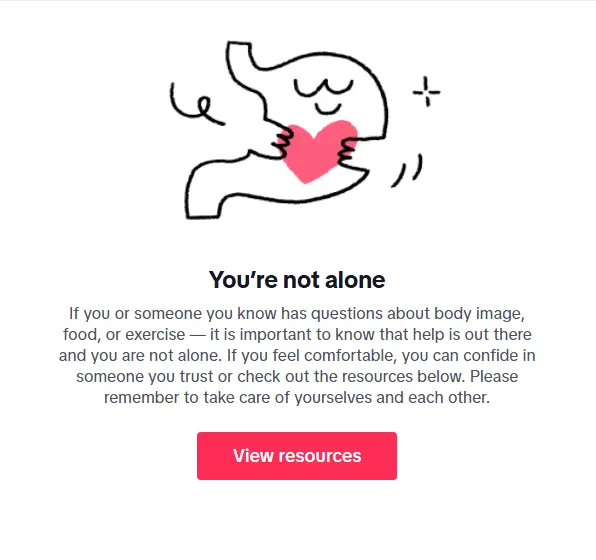- Hashtag Ban Only Scratches the Surface: Blocking #SkinnyTok redirects searches to help resources but doesn’t halt pro-anorexia content under other tags.
- Grey-Zone Content Thrives: Memes like “What I Eat in a Day” can equally promote balanced diets or dangerous calorie deficits, complicating moderation.
- Evidence of Harm: Even minimal exposure to disordered-eating videos can trigger unhealthy behaviors and negatively impact body image in at-risk youth.
- Body-Positive Voices Struggle for Reach: Creators sharing recovery stories and self-acceptance tips face an uphill climb against sensational “thinspo” content favored by algorithms.
- Policy & Algorithm Gaps Remain: TikTok’s safety measures—teen filters, redirections, expert partnerships—help but cannot fully prevent evasive creators or algorithmic promotion of harmful content.
- Call for Holistic Solutions: Meaningful progress demands stronger enforcement, greater transparency around recommendation algorithms, supportive counterprogramming, and potential regulatory frameworks.
Even with the #SkinnyTok hashtag blocked and searches rerouted to eating-disorder resources, creators—and algorithms—find new ways to push disordered-eating content.
When TikTok announced it would block the #SkinnyTok hashtag this spring, redirecting anyone who searched it to a screen offering eating-disorder helplines, it appeared to signal a hard stance against pro-ana (anorexia) content.
European regulators had warned the platform that such videos, featuring extreme weight-loss “tips” and emaciated influencers, were fuelling dangerous body-image ideals among young users.
Yet while the ban has removed millions of tagged clips from easy discovery, it has done little to halt the underlying tide of unhealthy diet advice. Creators simply migrate to new tags or embed the same messages in benign-looking formats, leaving TikTok’s safety measures one step behind a constantly evolving underground of disordered-eating content.
The Rise of Gray-Zone Diet Trends
Outright pro-ana hashtags like #SkinnyTok are now rarer, but subtler “What I Eat in a Day” or “Intermittent Fasting Tips” videos proliferate.
Some TikTokers share 200-calorie meal plans under the guise of lifestyle vlogs, while others weave disordered-eating directives into fitness routines. The platform’s recommendation engine, designed to surface similar content, can quickly steer a curious viewer from a wholesome recipe clip to a dangerously restrictive meal-prep guide in just a few swipes.
@itsallyok Cantaloupe sales after this📈 #fyp #bodypositivity #intuitiveeating #foodie #foodtok #fitness #foru #trending #foodvlog #fastfood #itgirl #beforeandafter #healthandwellness #whatieatinaday #workoutroutine #runner #marathonrunner #training #athlete #femaleathlete #recipe #recipes #homemade #homemaker #hack #foodideas #latenightsnack #mukbang #wieiad #cooking #fitgirl #fitnessmotivation #eating #discipline #beforeandafter #mealprep #dessertideas #dessert #sweettooth #viral
This blurred boundary between healthy and harmful advice makes moderation far more challenging than blocking a single tag—it demands context-aware detection across thousands of unmarked videos and captions.
Documented Harm: Why It Matters
Research underscores the stakes. A 2024 study found that under ten minutes of exposure to implicit pro-anorexia TikTok content significantly worsened body-image dissatisfaction and normalized extreme thin ideals in young women.
Clinicians warn that even fleeting encounters with calorie-restrictive influencers can trigger disordered eating behaviors in susceptible viewers, potentially leading to long-term health issues like osteoporosis, heart irregularities, and severe nutrient deficiencies.
With eating disorders carrying the highest mortality rate among psychiatric illnesses, experts emphasize that platforms bear responsibility for how algorithmic curation amplifies dangerous content to vulnerable audiences.
Body-Positive Voices Fight Back
In response, a cadre of creators has launched counter-programming grounded in lived experience. Athlete Kate Glavan shares candid videos about her own recovery from anorexia, urging viewers to block harmful accounts and seek professional help.
@kateglavan i have seen an influx of dangerous, misinformed, and disturbing videos on my FYP with creators explicitly promoting EDs onto their followings of young women. it scares and angers me. you deserve to get ice cream with your friends and live a full life that isnt revolving around being thinner and thinner.
Plus-size model Nyome Nicholas-Williams promotes a “body neutrality” approach, critiquing the movement’s co-option and championing self-acceptance beyond aesthetics.
Despite their earnest efforts, these advocates struggle for visibility: research shows sensational “thinspo” clips—featuring gaunt figures or provocative before-and-after shots—garner far more likes and shares than measured, educational content. Without algorithmic support, body-positive creators face an uphill battle for attention.
TikTok’s Safety Toolkit—and Its Limits
TikTok has layered in several safeguards: teens cannot view age-restricted content, any #SkinnyTok search now points to National Eating Disorders Association resources, and the platform collaborates with mental-health NGOs to flag harmful videos.
Yet these measures rely on user reports and static filters, while determined creators deploy evasive tactics—renaming tags, embedding tips in innocuous memes, or hosting live streams where moderators struggle to keep pace.
Algorithmic opacity further undermines trust: creators have reported that “recommended for you” feeds still surface calorie-deficient content even after repeated “not interested” signals.
Beyond Blocking: Toward a Safer Environment
Specialists argue that banning one hashtag is merely a band-aid on a systemic wound. Meaningful progress requires:
- Contextual AI Moderation: Tools that understand nuance—distinguishing a balanced “meal prep” tutorial from a harmful calorie-restrictive guide.
- Algorithmic Transparency: Clearer controls over recommendation parameters, allowing users (and parents) to filter out disordered-eating content.
- Regulatory Oversight: Legislation mandating rapid removal of harmful health misinformation, similar to rules for tobacco and pharmaceuticals.
- Amplifying Positive Creators: Platform incentives—like boosting reach or offering grants—for body-positive and recovery-focused storytellers.
A Long Road Ahead
The demise of #SkinnyTok may placate regulators in the short term, but it does little to stem the flow of disordered-eating content across TikTok’s vast, algorithm-driven ecosystem. Until platforms adopt more sophisticated moderation, partner closely with mental-health experts, and embrace transparency in how content is surfaced, young users will remain exposed to a pernicious undercurrent of diet extremism.
Blocking a single hashtag is a start, but true change demands systemic reform, cultural shifts, and an unwavering commitment to protect vulnerable audiences from harmful online influences.


